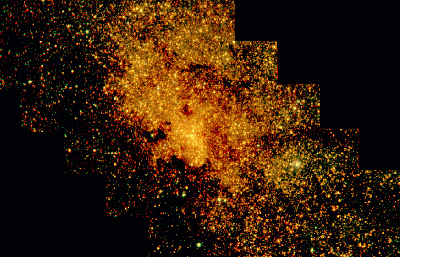Motivation
A large area near-infrared (IR) survey of the galactic plane (GPS)
will be beneficial to many areas of stellar astrophysics, e.g. Star
Formation, X-ray Binaries, AGB-stars, Protoplanetary Nebulae and Brown
Dwarfs. In addition, the proposed GPS is conceived as a Legacy
database and Atlas, with the long term goal of complete coverage of
the Galactic Plane, which will require the addition of data from
VISTA. The Atlas will lead to a major advance in understanding of the
structure of the galaxy. The science described below is not intended
to be a complete list but merely an indication of the most important
science drivers presently identified by the UKIDSS consortium. The
UKIDSS GPS will cover the entire northern plane in JHK up to
60o Declination, with two repeat scans at K band to provide
the data needed to identify variability in the
108-109 sources detected. The variability data
on so many sources will also detect phases of stellar evolution which
are rarely or never observed, such as ignition of helium or carbon in
the core or envelope of evolved stars. The database will be an
invaluable resource for future science in all wavebands both for
statistical studies and for baseline infrared photometry of newly
discovered sources. The Atlas will locate all bright stellar
populations (main sequence types O-F and giant stars) throughout the
galaxy by virtue of the low galactic extinction in the K band. The
fainter stellar populations (main sequence types G-M) will also be
detected at distances of several kiloparsecs. Distances will be
determined by dereddening in a two-colour diagram and kinematically
via follow up in the radio waveband.

Figure 3.1. True colour JHK mosaic of the Galactic
Centre, taken in July 1999 with UFTI on UKIRT, and covering a region
approximately 7.5 X 4.5 arcmin. The exposure was 30 seconds per
filter. Image taken from the UKIRT web page. Data obtained and reduced
by Ant Chrysostomou.
